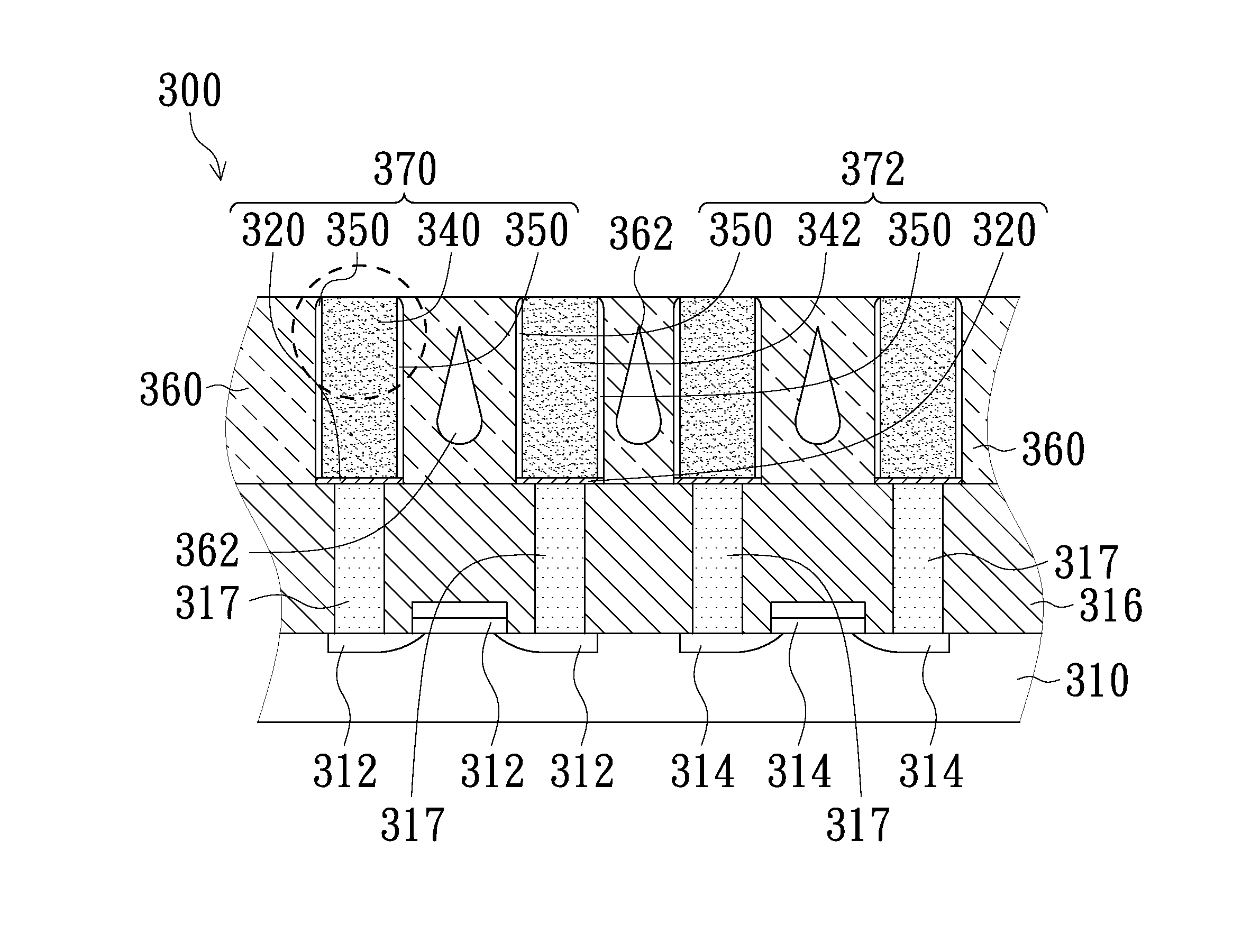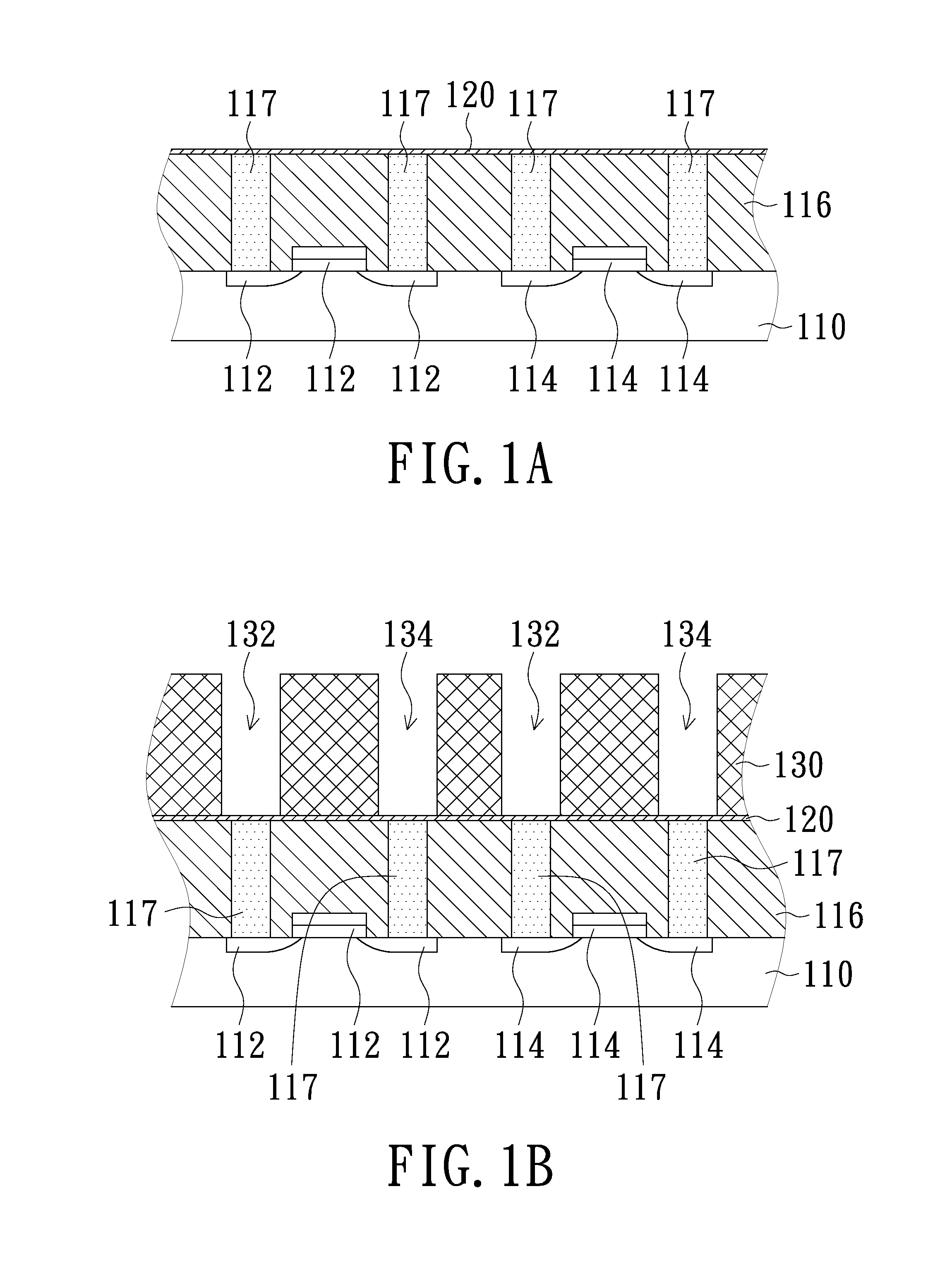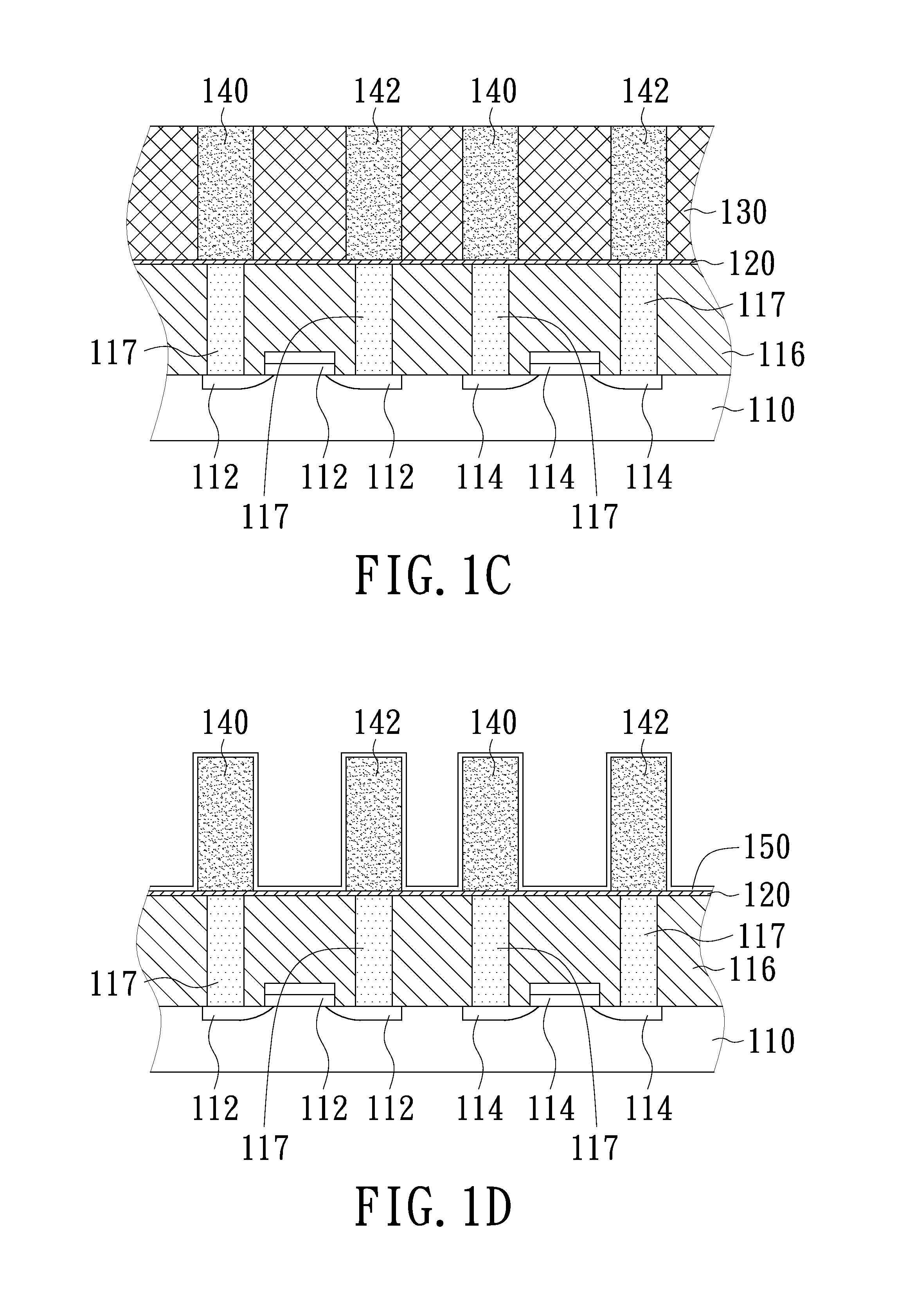Manufacturing method for metal line
a manufacturing method and metal line technology, applied in semiconductor devices, semiconductor/solid-state device details, electrical apparatus, etc., can solve the problems of damascene copper schemes facing difficulties in manufacturing processes and electrical properties, adversely affecting the filling of metal, and unavoidable high aspect ratio of metal lines, so as to avoid complicated etching processes and accompanying plasma damage, the effect of low parasitic capacitan
- Summary
- Abstract
- Description
- Claims
- Application Information
AI Technical Summary
Benefits of technology
Problems solved by technology
Method used
Image
Examples
Embodiment Construction
[0028]The present invention will now be described more specifically with reference to the following embodiments. It is to be noted that the following descriptions of preferred embodiments of this invention are presented herein for purpose of illustration and description only. It is not intended to be exhaustive or to be limited to the precise form disclosed.
[0029]FIGS. 1A-1F are schematic diagrams illustrating a method for manufacturing metal lines in as semiconductor device in accordance with an embodiment of the present invention. As shown in FIG. 1A, a substrate 110 is provided and a first barrier layer 120 is formed on the substrate 110. Specifically, the first barrier layer 120 is formed by atomic layer deposition (ALD).
[0030]The substrate 110 is a semiconductor substrate (e.g. a silicon substrate) or a metal substrate and has been formed with transistor structures 112, 114, memory structures (not shown) or other circuit elements (not shown). These circuit elements are isolated...
PUM
| Property | Measurement | Unit |
|---|---|---|
| area | aaaaa | aaaaa |
| insulating | aaaaa | aaaaa |
| aspect ratio | aaaaa | aaaaa |
Abstract
Description
Claims
Application Information
 Login to View More
Login to View More - R&D
- Intellectual Property
- Life Sciences
- Materials
- Tech Scout
- Unparalleled Data Quality
- Higher Quality Content
- 60% Fewer Hallucinations
Browse by: Latest US Patents, China's latest patents, Technical Efficacy Thesaurus, Application Domain, Technology Topic, Popular Technical Reports.
© 2025 PatSnap. All rights reserved.Legal|Privacy policy|Modern Slavery Act Transparency Statement|Sitemap|About US| Contact US: help@patsnap.com



